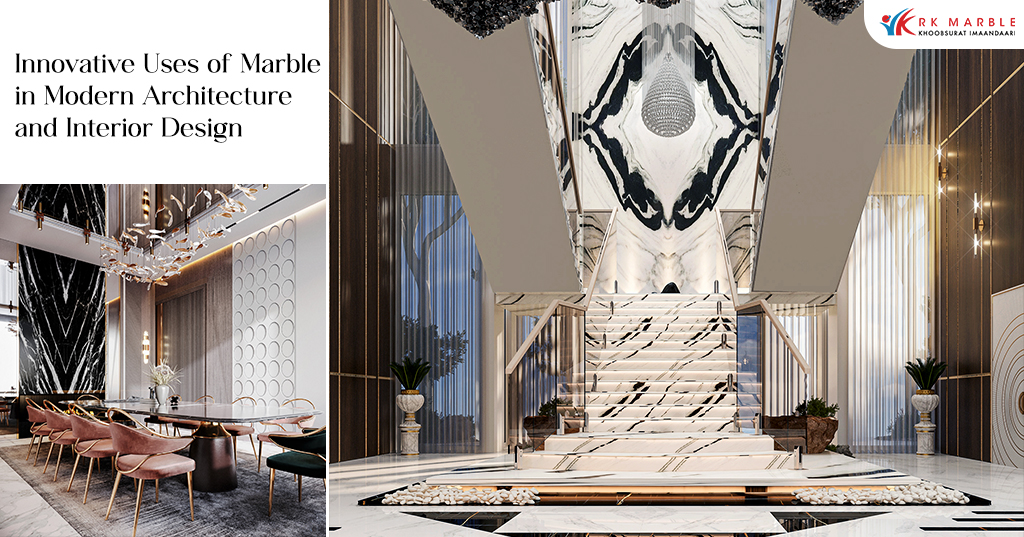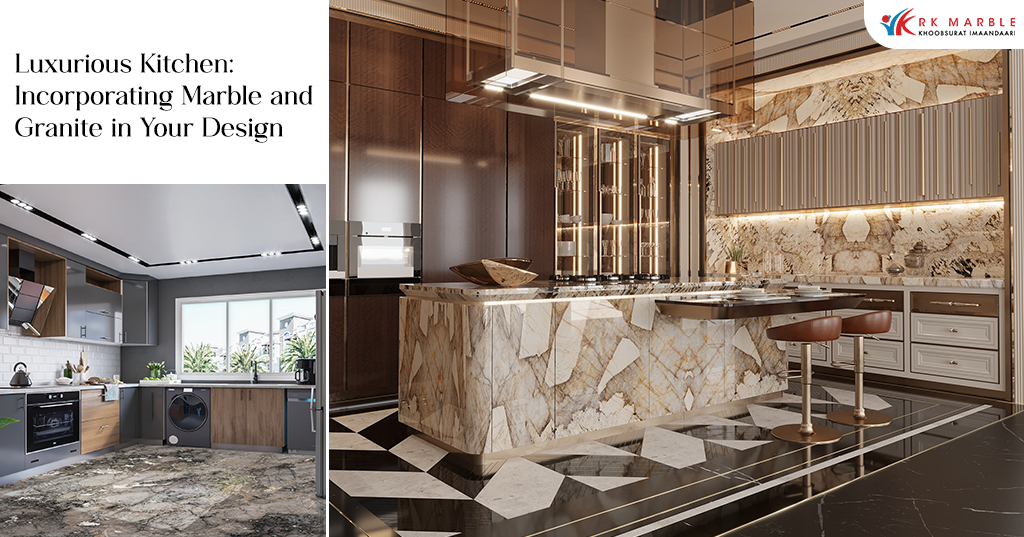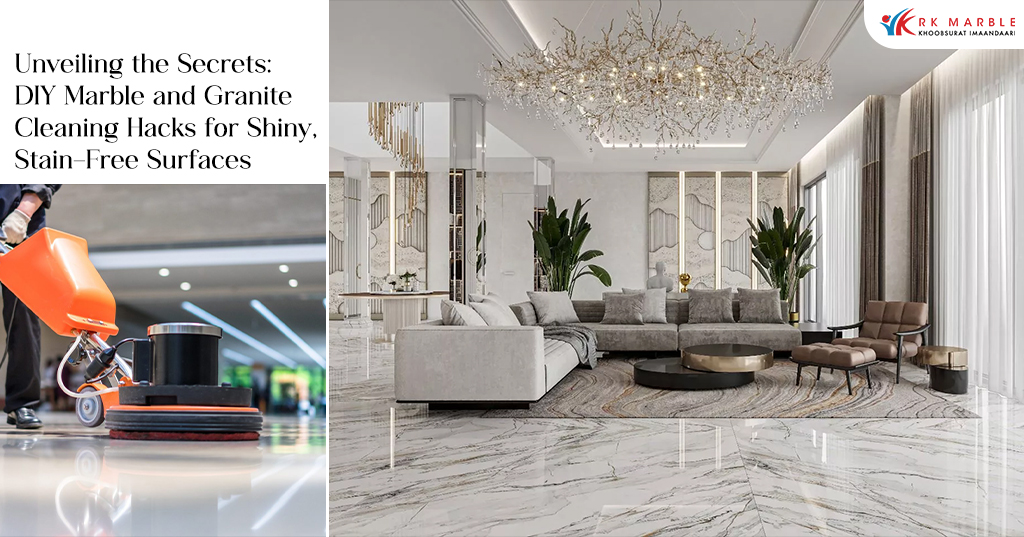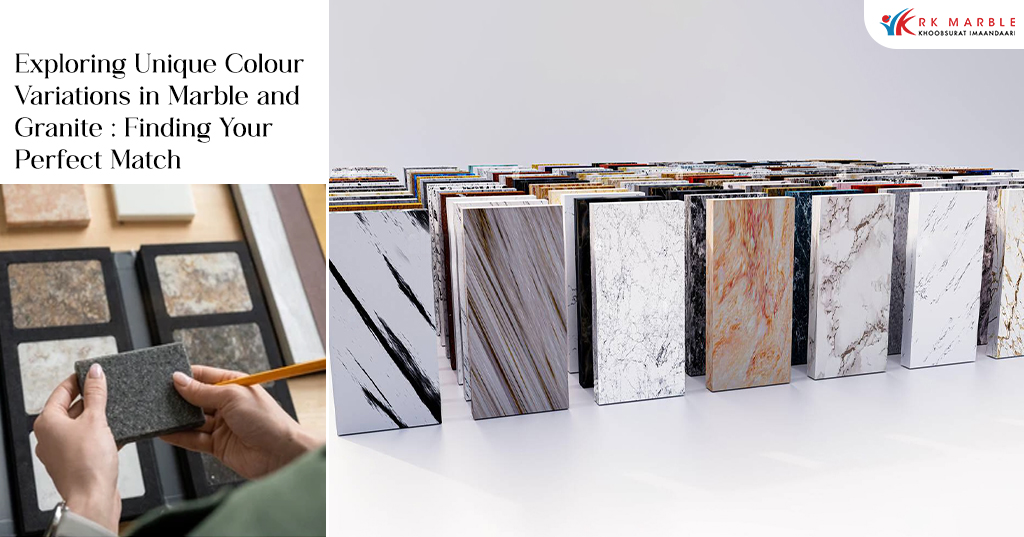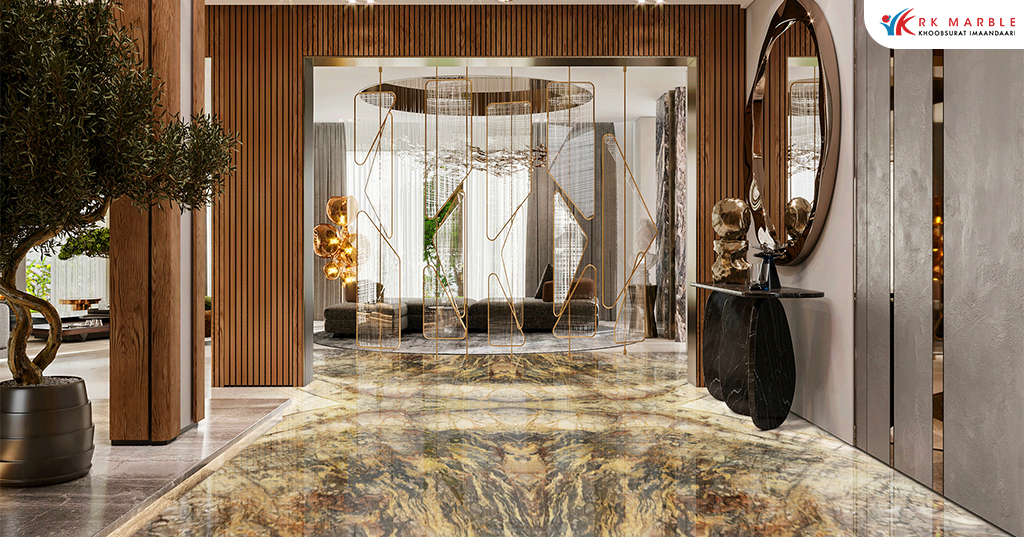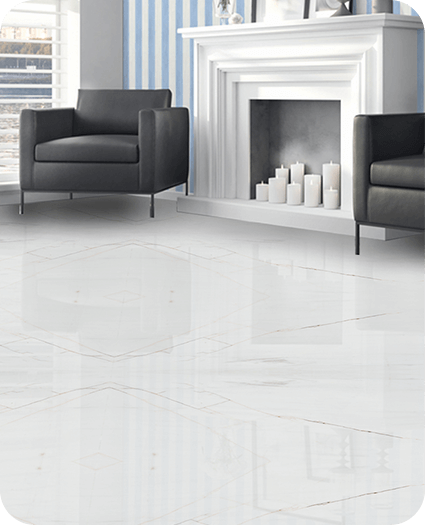
Marble is not for everyone.
Some people simply cannot imagine their dream home without marble. Some others decry that choice, quoting marble’s imperfections and fragility. Many are caught somewhere in between: in love with marble’s magnificent appeal, but uncertain if it’s the right choice for their needs. Yet, only a handful of these people, in reality, indulge and luxuriate in marble homes.
Perhaps this detailed guide on marble can offer some clarity on whether marble is right for you or not.
What is marble?
Marble is a metamorphic rock that is widely valued for its beautiful aesthetic and unique, colourful patterns. Renowned for its reflective nature, the word marble originates from the Greek word “marmar” – a verb that means “to glisten.” It is formed when limestone (a type of sedimentary rock) undergoes extreme heat and pressure.
Marble is beautiful to look at, cool to the touch, and a classic, timeless material. There’s really nothing quite like it. And uncountable people have admired it for centuries.

History of marble
A precious natural stone that has been incorporated in significant monuments and structures, marble is the unparalleled symbol of opulence. Its first known use was between 450 BC and 400 BC in Rome and Greece. Since then, it has been used in countless historic architecture across the globe.
Right from the glinting gorgeousness of the Taj Mahal to the towering Washington Monument, marble has been revered by architects and sculptors since times immemorial. Some of the most notable structures made of marble include:
- The statue of David, by Michelangelo
- The Pantheon, Rome
- Basilica of Santa Croce, Florence, Italy
- Lincoln Memorial, USA
- Odeon of Herodus Atticus, Athens, Greece
- The Leaning Tower of Pisa, Italy
- Peter’s Basilica, Vatican City
… and the list goes on.
How is marble formed in nature?
Nature’s ingenious alchemy
Marble is formed by the metamorphosis of limestone.
Limestone, which forms on the shores and floors (seabed) of tropical seas, consists of shells, shelly sediments and even fossils which mostly comprise calcites (Calcium Carbonate).
Over a significant span of time, the ocean pushes the limestone bed under the Earth’s crust. The additional heat makes the rock warm and flexible, like clay or butter.
The calcites in the limestone recrystallize under extreme heat and pressure, interlocking and fusing the grains together tightly. Sometimes, the limestone has layers of clay, silt, and other minerals trapped between the layers, which lend colourful veins to the marble. The dynamic action of the rocky layers causes the stones to twist, buckle, bend and swirl, creating the graceful marble enriched with flowing bands of colours. This process of marble formation is called metamorphosis.

Marble processing and treatment
Making marble perfect for your home
Marble is extracted from quarries in mountains. For efficient sourcing and carriage operations, experts deploy highly sophisticated equipment. Blocks of marble are cut in these quarries and then transported to processing plants.
While there are many different ways to treat marble and make it usable, one of the best international-grade methods is CHR (Computerized Heat Resin) treatment, also known as Polymerization and Vacuum Resin Treatment.
- Superior grade Fibre Netting right after sourcing high-quality marble blocks ensures smooth surfaces when the marble is sliced into slabs.
- The marble block is carefully sliced into slabs using robotic arms and equipment. Since at this stage, the marble block is not hardened with epoxy resin, it takes less energy to cut through the marble with maximum precision.
- A special glass fibre is meticulously applied on the slabs to protect against mishandling during logistics.
- Through a process of vacuumization, the dust and impurities trapped in the tiny holes and crevices are cleaned thoroughly.
- The marble slabs undergo X-ray scanning where the slab is inspected for internal cracks, pinholes and crevices.
- Epoxy resin, which has a lower viscosity than water, is applied on the marble slab. It finds its way into the small pores and cracks, filling in each hole and settling into the natural gaps in the stone. By applying epoxy resin on each individual slab – and not on the whole block – we ensure that each slab is strengthened and no crack is left unchecked. This makes the marble slabs less prone to damage from common household activities.
- The treated marble is finally polymerized in a kiln where the resin hardens, bonding with the stone strongly.
- Post polymerization, the slabs are scanned under X-ray again, under expert supervision. If any tiny nook or cranny is missed, the whole process is repeated until perfection is achieved.

Properties of marble
Why is marble the best choice for home interiors?
There are two distinct categories of marble:
- Chaste white calcitic marble that chiefly comprises calcium carbonate and some minerals that add fascinating veins, such as Statuario, Flawless White, and Cat’s Eye marble.
- Dolomitic marble that chiefly comprises calcium magnesium carbonate and is resplendent with the presence of a lot of minerals, such as Armani Brown, Belgium Black, and Royal Cream.
Regardless of its category, marble has some common properties that it pays to know:
Aesthetics and appearance: Eternal beauty
Marble comes in a spectrum of hues and finishes, opening up numerous avenues for innovation in interior design. While marble is available in white, beige, brown and black varieties among other rarer colours, each marble has distinct veins and patterns. Moreover, each slab of marble is unique, just like fingerprints and DNA.
Durability: Immortal strength
Marble is an extremely durable natural stone. While many claim that it easily discolours, scratches and stains, this may be due to a lack of careful processing and maintenance. Thanks to our intensive treatment, the marble is strong enough to last for 4 to 5 decades when maintained properly.
Chemical reactivity: Treat with care
Marble is known to easily react with acids such as vinegar, wine and harsh cleaning agents, often leading to stains or discolouration.
Marble’s density and low porosity also make the natural stone hypoallergenic in homes and commercial buildings. Materials like wood may mould and bow when wet, and carpets may collect dust and dander. Marble, however, does not trap these allergens and therefore is a popular preference among homeowners with allergy concerns.
Marble finishes: Glamour without gloss
Gone are the days when you could only install and polish your marble floors and walls. Now, you have an extensive array of finishes to choose from. You can opt for the ragged honed, stallic soft, and rock face finishes that draw attention to a particular wall. Or choose flower silken, hydro soft and wave soft finish for a nuanced appearance. For anti-skid flooring, you may choose a matte finish over the conventional diamond polish. The possibilities are limitless.

Marble in modern homes
Marvellous residential and commercial designs with marble:
Do you think marble only has a place in vintage architecture and design? Think again. Marble has come a long way since it was used for historic European structures. The flourish of intricate details has given way to dramatic contemporary styles and untouched blocks claiming the spotlight in modern castles.
Flooring
While the popular choices for marble flooring are beige and white, grey marble has been in vogue lately, followed by brown and the much rarer black marble. Coupled with proper lighting, the dark coloured marble varieties add a matchless touch of elegance and class to the interiors. As for white, people seem to be now moving away from monotonous white marble and more inclined to experiment with the tantalizing array of patterns and veins.
Wall cladding
Marble walls are in vogue nowadays, chiefly as walls are less prone to heavy traffic, scratching or spills. Colourful exotic marble can be used as highlights or statement walls. In commercial settings, the premium exotic varieties add value in reception areas and waiting lounges.
Vanities and bathrooms
Bathroom vanities, being an extremely personal space, are designed with much thought and care. Marble only elevates the luxurious ambience of your powder room, making your self-care moments even more special. Furthermore, since marble is extremely versatile and durable, it makes for the perfect material for vanity tops and even showers.
Decor
Marble table-tops and other decor knick-knacks may be rare, but they never fail to inspire awe and envy among guests.

How to care for marble?
How to maintain your marble floors and walls?
- Use a quality sealant and re-apply it on a regular basis. We would suggest you re-seal your marble flooring every year or so, especially in high-traffic areas.
- Avoid harsh chemicals and acid-based cleaners. Excessively acidic or alkaline chemicals like bleach or vinegar can etch (chemical burn) and dull your marble.
- Clean up spills that may cause the marble to stain with mild soap or natural cleaning solution and water.
- Regularly clean the marble floors with a fresh, non-treated dust mop.
- If you have opted for a honed finish over diamond polish, use soft scrub or brush to clean the dust and dirt.
Can you use bleach on marble?
Excessive use of bleach on marble can cause irreparable damage. But if you must use bleach to clean your light coloured marble floor, make a 6% hydrogen peroxide or bleach solution with warm water. Use a sponge or soft cloth to apply this mild solution to the stained marble. Let it sit for about 10 minutes before wiping the spot with a clean cloth and rinse to remove any residue. Dry and reseal the stone for longevity.
Marble is a rare natural stone that ages with time. The slight stains, marks and patina tell a story and add to the character of your home. Embrace it, as a little bit of imperfection makes it perfect.

Frequently asked questions
Does marble crack with heat?
Marble has some tolerance for heat. However, if you chuck a scalding pan straight out of the oven onto a marble counter, it may experience thermal shock, just like any other natural stone. This may cause cracks in an extreme scenario, or at least discolour or weaken the stone. A simple solution is to use a trivet or heat-resistant mat on the countertop to avoid accidents.
Will marble run out?
Calcites and dolomites – the minerals that make up most of the marble – are two of the most abundant minerals on the face of Earth. Being a natural resource, marble may eventually run out. However, currently there are hundreds of massive quarries of marble across the globe that can yield the natural stone for decades.
Will marble ever go out of style?
Marble has been marveled at for centuries now, and probably will be admired for centuries to come. Albeit expensive, marble is a versatile material that has stood the test of time and adapted to the trends over the ages – right from vintage designs to contemporary architecture. Hence, it is not likely that marble will go out of style anytime soon.
Will marble lighten after installation?
Since marble is a porous stone, it absorbs water from the thinset and grout when installed, seeming darker than its original colour. It is advised to let the installed stone dry out and return to its original colour before sealing it with a good quality sealant.
Over the course of time, the iron present in some varieties of white marble may oxidize and lend a yellowish sheen to the marble as it ages. This usually happens if the water remains on the surface or trapped under the slab for a long time. You may get a professional to help you with this.
Will marble crack?
Marble is a durable natural stone and can withstand common wear and tear. However, if you purchase poor quality marble, it will most likely crack, chip and break with heavy traffic in no time. Marble can also crack and chip due to improper handling.

It’s not luxury if it’s not marble
If you have been on the fence about using marble in your home, it’s time to climb down and go shopping. Marble is undoubtedly a fabulous material – an investment that can enhance the beauty of your home for ages to come.
Do you have more queries? We are happy to help. Please connect with our stone experts at +91 9119118118 or visit rkmarble.com for more information.
